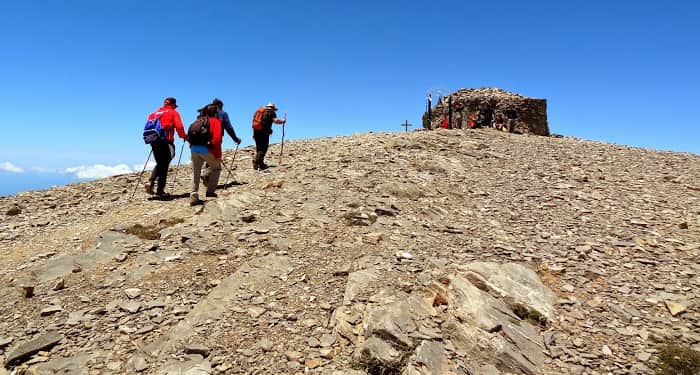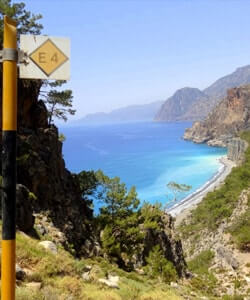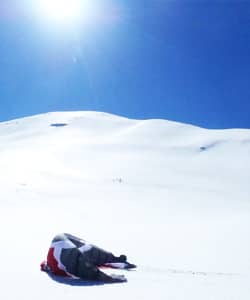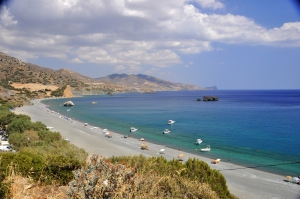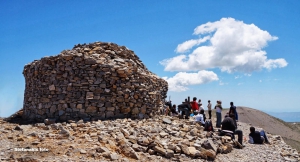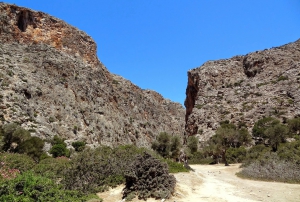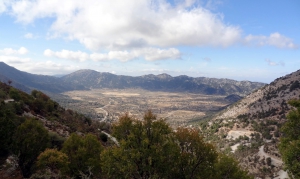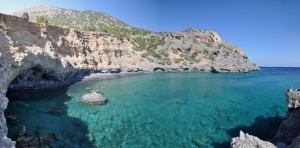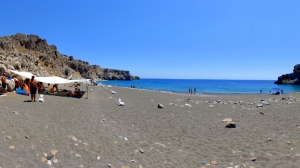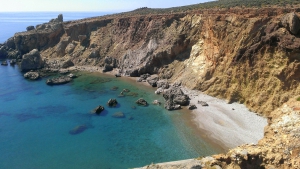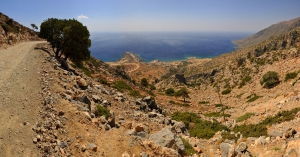If you exclude the repelling landscape of tanks, you will certainly be enchanted by the beautiful beaches of Kali Limenes, which are suitable for swimming all year round. As its name name suggests, sea in Kali Limenes (i.e. Fair Harbors) is almost always calm, except in winter. This was one of the reasons for the construction of the tanks here. If you visit the place on weekend, all its beaches are crowded by thousands of people, despite the tiring route in Asterousia.
The imposing Ida Range has the highest peak of Crete, Timios Stavros at 2546m altitude. For reaching Timios Stavros, there are many ways from both north and south sides. The view for the peak is amazing towards all directions.
Agiofarago Gorge (meaning Gorge of Saints) is located in south of Odigitria Monastery and has been shaped near the beds of two streams. The first stream starts north - northeast of Gyalomonochoro and the other starts northeast of the Odigitria. The two streams meet, near St Kiriaki and after following a relatively smooth path, west and south of Church St. Kiriaki, it arrives in Porofarango, where the main gorge of Agiofaraggouo starts and ends at the Libyan Sea, at a small but amazing beach.
Omalos is located 38km south of Chania at an altitude ranging from 1,040 to 1,250 meters, surrounded by the high peaks of the White Mountains. The plateau is particularly beautiful in the winter, when it is frequently covered by snow. At older times, the plateau of Omalos was the shelter of the locals and the base of rebels during the two and a half centuries of the Turkish occupation, but also during all other wars against invaders.
Agios Antonios (St. Anthony) is located 71km south of Heraklion, between the hamlet of Agios Ioannis and the Monastery of Koudoumas. The area is very isolated and can be accessed only via a footpath that connects Agios Ioannis with the monastery. The trail passes between pine trees.
Trafoulas or Dragon Bay is located 4km east of Lendas and 69km south of Heraklion. It is a completely isolated beach of south Crete, which is formed at the exit of a small canyon on the Cape Trafoulas or Trahilas. According to the legend, this beach was visited by King Minos and his men, while the neighbouring Loutra beach was the bathing beach of Minos's wife, Pasiphae, and her female followers.
The most common way to get there is to drive in the rugged dirt road that starts from the village Ahendrias and ends at the Monastery of St. Nikitas after 15km. The fascinating route runs along steep cliffs and wild sharp rocks, a characteristic landscape of the Asterousia Mountains.
Agios Ioannis (St. John) is a small coastal village located 73km south of Heraklion, south of the village Kapetaniana. Kapetaniana is very close to the highest peak of Asterousia Mountains, Kofinas Peak. In Kapetaniana, you can visit the Byzantine Church of the Panagia and the Church of the Holy Cross, or climb in the local climbing track.





